Evaluation of the Arthur Project: Evidence-Based Mentoring in a Social Work Framework with a Social Justice Approach
Abstract
1. Introduction
1.1. Need for the Arthur Project
1.1.1. General Need
1.1.2. Middle School Students
1.1.3. The Arthur Project Program Goals
- Cultivate youths’ social-emotional wellness and mental health.
- Increase academic engagement.
- Provide youth with leadership, goal achievement, problem-solving, knowledge, self-advocacy, and communication skills to reach their full potential.
- Provide the skills to successfully transition to high school and beyond.
- Foster family engagement.
- Encourage culturally responsive community and civic engagement.
- Apply an antiracist, social justice lens to mentoring in furtherance of awareness and attunement to wider social impacts and social change.
1.1.4. The Arthur Project Focus
2. Methods
2.1. Participating Students
2.2. Participating Mentors
2.3. Therapeutic Mentoring
2.4. Mentor Training and Activities
2.5. Academic Engagement
2.6. Mattering
2.7. Purposeful and Positive Relationship Ending
2.8. Documentation of TAP: Surveys and Forums
2.8.1. Quantitative Surveys
- Mentee surveys were retrospective pre- then post-tests.
- Mentor surveys were post-tests.
- Teacher surveys were post-tests.
- Family/caregiver surveys were post-tests.
2.8.2. Qualitative Forum Groups
2.8.3. Measurement Tools and Data Collection
2.9. Data Analysis
3. Results
3.1. Goal 1: Cultivate Youths’ Social-Emotional Wellness and Mental Health
My mentor makes me feel like I matter. (6th-Grade Mentee)
I have a mentee who was so quiet. She started speaking up and now helps others.(Mentor)
3.1.1. Persistence, Perseverance, and Confidence
3.1.2. Self-Advocacy and Self-Help
3.1.3. Mattering
3.1.4. Mental Health
3.1.5. Qualitative Themes
My kids have grown in different ways. One mentee was so quiet. She broke out of her shell and now comes to the office to ask if we can have a session! (Mentor)
My mentor supports my opinions.
They trust you and you trust them.
They listen.
I trust her because she knows how I feel. She understands.
She keeps my stuff to herself and doesn’t judge.
I feel comfortable and safe.
I can say whatever I want.
You feel more important.
My mentor makes me feel like I matter.
If I am upset, she always asks if I am ok and makes me feel comfortable.
If I feel down, she makes me have faith in my mind.
We can tell our mentor anything and they listen to us and give to us.
We have to be our authentic self to build trust.
I opened myself more to my mentees. Once I revealed myself to them, they began to reveal themselves to me.
I recall what they told me, so they know I am listening.
They share more and have increased self-awareness.
She is not as shy and started asking questions in class.
They have more self-awareness.
3.2. Goal 2: Increase Academic Engagement
I was going to fail. My mentor helped me. (Mentee)
His mentor sees the potential in him, and she lets him know it. (Caregiver)
TAP is a tremendous help with teachers and school staff. (Caregiver)
3.3. Goal 3: Provide Youth with Leadership, Goal Achievement, Problem-Solving and Communication Skills to Find Their Strengths and Reach Their Full Potential
We looked up the word “charming”. We found her strengths. (Mentor)
We reminded them of their awesomeness. (Mentor)
We worked on a goal for me to stay quieter when the teacher is talking.
I got my grades up.
I tell her I want to be a dancer. Sometimes I want to give up and she tells me to keep my dream.
There are people I don’t like and things that are happening at school. She gives me coping strategies.
I have anger issues and it used to bottle up. She helped me express myself.
We don’t offer solutions. There is a lot of room for problem solving.
We support them in resolving difficult situations.
At first, my mentee was always late. He is not late anymore and goes to bed earlier.
I see them opening up in class and communicating more.
3.4. Goal 4: Provide the Skills to Successfully Transition to High School
3.5. Goal 5: Foster Family Engagement through the Family Educational Advocacy Program
3.6. Goal 6: Encourage Culturally Responsive Community and Civic Engagement
3.7. Goal 7: Apply an Antiracist, Social Justice Lens to Mentoring in Furtherance of Awareness and Attunement to Wider Social Impacts and Social Change
My mentor helped with how I could be better. (6th-Grade Mentee)
I understand my mentees’ racial identities and I am able to perceive social, political and community cultures. (Mentor)
We talk about unjust systems, how they are perceived, and how they perceive. (Mentor)
I revealed myself to them and they began to reveal themselves to me. (Mentor)
3.8. Limitations
4. Discussion: Recommendations and Conclusions
4.1. Evaluation and TAP Goals
4.2. Similarities with Other Programs
4.3. Program Recommendations
- To address the youths’ mental health symptoms, especially regarding PTSD and ongoing depression, TAP is instituting a program in which students with the greatest needs are matched with mentors with the highest levels of experience. TAP has hired an additional supervisor to oversee these matches and will delay matching pending thorough assessments.
- Based on staff identification of further needs and students’ and families’ feedback, additional programming has been added. A new Young Men’s Group discusses life skills, health education, hygiene, and healthy relationships and is open to the school community for greater social networking opportunities and peer support.
- Based on previous mentor input, new training, supervision, support, and professional development will focus on several areas, including attention to youth with highly complex needs [25] and mentees’ political, social, and economic challenges. Beginning with the 2023–2024 school year, these youths were matched with the most experienced interns.
- Data collection and analysis software will be upgraded to serve more students and calculate results for larger numbers of students. During the school year, TAP will continue to track retention, attendance, grades, and state test scores and monitor disciplinary infractions.
- Several new tools will be employed. For example, instead of the Classroom Behavior form, the widely accepted and validated Functional Behavioral Assessment tool will be used [56]. This tool allows mentors to observe over many points in time students’ behavior in the classroom. A tool will be utilized that captures students’ perceptions of “mattering” regarding family, friends, school, and the community. Another new tool measures quality of the mentor–mentee relationship [57]
- Resource Library: In response to mentors’ requests, TAP increased the online resources and developed a new retrieval system. The resources are accessible to all mentors and staff.
- Youth Advocacy: TAP engaged the NYU Wagner School of Public Service for design of a youth advocacy plan to disrupt the school-to-prison pipeline. Youth advocacy serves youth and communities, including healing, empowerment, social engagement, and civic pride [58].
- Caregiver Engagement: The caregiver responses were minimal, likely for many reasons outlined in the literature [46]. With family engagement crucial to a child’s academic success [45], through the Education Advocacy Program, TAP will increase efforts to engage them with a series of open houses, orientations, and individual staff and mentor visits.
- Alumni Program Plan: With the first cohort of mentees transitioning to high school, TAP developed a means for maintaining support and engagement. The intention is that students remain in The Arthur Project for life, ultimately becoming mentors themselves. Based on research that indicates longer participation results in longer-term positive outcomes [37], TAP asks program alumni to facilitate the 8th Grade Emerging Leadership Institute. To this end also, TAP alumni will be contacted for surveys and interviews on high school outcomes.
- Emerging Leaders Institute: Following their 8th grade year, mentees may participate in TAP workshops and other opportunities that further prepare them for high school. These alumni may also become peer mentors, building on their social and interpersonal relationships, learn how to manage conflict, and take part in social justice advocacy in support of the important high school years [59].
- Town Halls: The Town Hall is a monthly meeting of stakeholders facilitated by the Student Leadership Council (TAP students) and held monthly for open communication with the students.
- Community: Research confirms the importance of shifting the influence and power to community residents [47], especially true in low-income communities and communities of color. Recently, at families’ requests, TAP hosted broader community events. Additional feedback will be sought from community members and stakeholders, for example, requesting input on program improvements and greater student engagement.
4.4. Conclusions
Author Contributions
Funding
Institutional Review Board Statement
Informed Consent Statement
Data Availability Statement
Conflicts of Interest
References
- Lyons, M.D.; McQuillin, S.D.; Henderson, L.J. Finding the sweet spot: Investigating the effects of relationship closeness and instrumental activities in school-based mentoring. Am. J. Community Psychol. 2019, 63, 88–98. [Google Scholar] [CrossRef]
- Bowers, E. Goal setting and support. In Becoming a Better Mentor: Strategies to Be There for Young People; Herrera, C., Garringer, M., Eds.; Mentor: Boston, MA, USA, 2022; pp. 109–118. [Google Scholar]
- Miner-Romanoff, K. Educational attainment for at-risk high school students: Closing the gap. SN Soc. Sci. 2023, 3, 88. [Google Scholar] [CrossRef]
- DuBois, D.L.; Portillo, N.; Rhodes, J.E.; Silverthorn, N.; Valentine, J.C. How effective are mentoring programs for youth? A systemic assessment of the evidence. Psychol. Sci. Public Interest 2011, 12, 57–91. [Google Scholar] [CrossRef]
- Rhodes, J.; DuBois, D.L. Understanding and facilitating the youth mentoring movement. Soc. Resch. Child Devel. Soc. Policy Rep. 2006, 20, 1–19. [Google Scholar] [CrossRef]
- National Center for Educational Statistics. Characteristics of Children’s Families, Condition of Education. 2023. U.S. Department of Education. Available online: https://nces.ed.gov/programs/coe/indicator/cce/family-characteristics (accessed on 15 January 2023).
- Yin, A. Education by the Numbers. N. Y. Times Mag. Educ. Issue 2017. Available online: http://www.nytimes.com/2017/09/08/magazine/education-by-the-numbers.Html (accessed on 15 January 2023).
- National Center for Education Statistics. Public High School Graduation Rates. 2023. U.S. Department of Education. Available online: https://nces.ed.gov/programs/coe/indicator/coi (accessed on 15 January 2023).
- Burrus, J.; Roberts, R.D. Dropping out of high school: Prevalence, risk factors, and remediation strategies. R D Connect. 2012, 18, 1–9. [Google Scholar]
- Garcia, E.; Weiss, E. Student Absenteeism: Who Missed School and how Missing School Matters for Performance. 2018. Economic Policy Institute. See Here U.S. Department of Education, 2016. Available online: https://www.epi.org/publication/student-absenteeism-who-misses-school-and-how-missing-school-matters-for-performance/ (accessed on 15 January 2023).
- Abramson, A. Children’s Mental Health Is in Crisis: 2022 TRENDS report. Monit. Psychol. 2022, 53, 69. [Google Scholar]
- Office of the New York State Comptroller. DiNapoli: NYC Department of Education Must Do More to Combat Mental Health Crisis among Youth. 2022. Available online: https://www.osc.state.ny.us/press/releases/2022/08/dinapoli-nyc-department-education-must-do-more-combat-mental-health-crisis-among-youth#:~:text=The%20audit%20found%20that%20too,instruction%20critical%20to%20developing%20their (accessed on 15 January 2023).
- Lindt, F.S.; Blair, C. Making a difference with at-risk students: The benefits of a mentoring program in middle school. Middle Sch. J. 2017, 48, 34–39. [Google Scholar] [CrossRef]
- Lee, J.A.; Heberlein, E.; Pyle, E.; Caughlan, T.; Rahaman, D.; Sabin, M.; Kaar, J.L. Evaluation of a resiliency focused health coaching intervention for middle school students: Building resilience for health kids program. Am. J. Health Promot. 2021, 35, 344–351. [Google Scholar] [CrossRef]
- New York City Department of Education. General Information, North Bronx School of Empowerment. 2018–2019. Available online: https://tools.nycenet.edu/snapshot/2019/11X287/EMS/NYC (accessed on 15 January 2023).
- Data.Nysed. IS 285 Meyer Levin Enrollment (2022–23). Available online: https://data.nysed.gov/enrollment.php?year=2023&instid=800000044646 (accessed on 15 January 2023).
- Sachser, C.; Berliner, L.; Risch, E.; Rosner, R.; Birkeland, M.S.; Eilers, R.; Hafstad, G.S.; Pfeiffer, E.; Plener, P.L.; Jensen, T.K. The child and Adolescent Trauma Screen 2 (CATS-2) validation of an instrument to measure DSM-5 and ICD-11 PTSD and complex PTSD in children and adolescents. Eur. J. Psychotraumatol. 2022, 13, 2105580. [Google Scholar] [CrossRef]
- Yadav, V.; O’Reilly, M.; Karim, K. Secondary School transition: Does mentoring help “‘at-risk” children? Commun. Pract. 2010, 83, 24–28. [Google Scholar]
- Cavell, T.A.; Spencer, R.; McQuillin, S.D. Back to the future: Mentoring as means and end in promoting child mental health. J. Clin. Child Adolesc. Psychol. 2021, 50, 281–299. [Google Scholar] [CrossRef]
- Center for the Study of Social Policy. Youth Resilience, Protective and Promotive Factors. 2019. Available online: https://cssp.org/wp-content/uploads/2019/01/Research-Briefs-and-Action-Sheets-YT-CW.pdf (accessed on 15 January 2023).
- Garringer, M.; McQuillin, S.; McDaniel, H. Examining Youth Mentoring Services across America: Findings from the 2016 Mentoring Program Survey; Mentor: Boston, MA, USA, 2017. [Google Scholar] [CrossRef]
- French, B.H.; Lewis, J.A.; Mosley, D.V.; Adames, H.Y.; Chavez-Dueñas, N.Y.; Chen, G.A.; Neville, H.A. Toward a psychological framework of radical healing in communities of color. Couns. Psychol. 2019, 48, 14–46. [Google Scholar] [CrossRef]
- Ginwright, S. The Future of Healing: Shifting from Trauma Informed Care to Healing Centered Engagement. 2018. Available online: https://ginwright.medium.com/the-future-of-healing-shifting-from-trauma-informed-care-to-healing-centered-engagement-634f557ce69c (accessed on 15 January 2023).
- Rennekamp, R.A.; Nall, M.A. Using Focus Groups in Program Development and Evaluation; College of Agriculture, University of Kentucky: Lexington, KY, USA, 2000. [Google Scholar]
- Ervin, A. Mentoring Program Feature: The Arthur Project. 2021. Available online: https://www.evidencebasedmentoring.org/mentoring-program-feature-the-arthur-project/ (accessed on 15 January 2023).
- Mentor. Starting a Youth Mentoring Program. Matching. 2024. Available online: https://www.mentoring.org/resource/matching/ (accessed on 15 January 2023).
- Weiler, L.M.; Zimmerman, T.S.; Haddock, S.; Krafchick, J. Understanding the experience of mentor families in therapeutic youth mentoring. J. Community Psychol. 2014, 42, 80–98. [Google Scholar] [CrossRef]
- Chow, R. Don’t just mentor women and people of color. Sponsor them. Harv. Bus. Rev. 2021, 30, 1–9. [Google Scholar]
- Social Work License. How Are Social Workers Helping with the Mental Health Crisis? 2023. Available online: https://www.socialworkerlicense.com/how-are-social-workers-helping-with-the-mental-health-crisis/ (accessed on 15 January 2023).
- Stark, C.; Wehrman, J.; Stutey, D.; Solis, A.; Severn, K.; Cammell, M.; Gloden, H.; Enkler, K.; Notestine, L.; Palacios, A. Therapeutic mentoring for multiply marginalized youth: A grounded theory study of mentors’ adaptation during COVID-19 crisis. J. Hum. Serv. 2021, 40, 116–132. [Google Scholar] [CrossRef]
- Weiston-Serdan, T. Critical Mentoring: A Practical Guide; Routledge: New York, NY, USA, 2017. [Google Scholar]
- Polos, J.A.; Koning, M.S.; Hargrove, T.W.; Kershaw, K.N.; McDade, T.W. Structural racism in school contexts and adolescent depression: Development of a new indices for the National Longitudinal Study of Adolescent to Adult Health and beyond. SSM Popul. Health 2022, 19, 101237. [Google Scholar] [CrossRef]
- National Association of Social Workers. Code of Ethics. 2024. Available online: https://www.socialworkers.org/About/Ethics/Code-of-Ethics/Code-of-Ethics-English (accessed on 15 January 2023).
- Finn, J.L. Just Practice: A Social Justice Approach to Social Work; Oxford University Press: New York, NY, USA, 2016. [Google Scholar]
- Hamilton, S.F.; Hamilton, M.A.; Pittman, K. Principles for youth development. In The Youth Development Handbook: Coming of Age in American Communities; Hamilton, S.F., Hamilton, M.A., Eds.; Sage Publications: Thousand Oaks, CA, USA, 2004; pp. 3–22. [Google Scholar]
- Toshalis, E.; Nakkula, M.J. Motivation, Engagement, and Student Voice. Nellie Mae Education Foundation 2012. Available online: https://www.howyouthlearn.org/pdf/Motivation%20Engagement%20Student%20Voice_0.pdf (accessed on 15 January 2023).
- Lyonsa, M.D.; Chan, W.Y. Mentoring for Enhancing School Attendance, Academic Performance and Educational Attainment. Office of Juvenile Justice and Delinquency Prevention 2021. Available online: https://ojjdp.ojp.gov/library/publications/mentoring-enhancing-school-attendance-academic-performance-and-educational (accessed on 15 January 2023).
- Judd, B. Perceptions of “Mattering:” A Literature Review: Youth’s Perception of Mattering, Being Valued and Connecting to Their Community. Discussion Draft 2016. Available online: https://safealaskans.org/wp-content/uploads/2018/05/2016-Youth-Perception-of-Mattering-Being-Valued-and-Connecting-to-their-Community-A-summary-of-literature-a-nd-best-practices-1.pdf (accessed on 15 January 2023).
- Roberts, L. Ending care relationships: Carer perspectives on managing ‘endings’ within part-time foster services. Adopt. Foster. 2011, 35, 20–38. [Google Scholar] [CrossRef]
- Spencer, R.; Keller, T.E.; Perry, M.; Drew, A.L.; Clark-Shim, H.; Horn, J.P.; Miranda-Díaz, M.; McCormack, M.J. How youth mentoring relationships end and why it matters: A mixed-methods, multi-informant study. Ann. N. Y. Acad. Sci. 2021, 1483, 67–79. [Google Scholar] [CrossRef]
- National Mentoring Partnership. Always Come and They Never Say Goodbye: Understanding Healthy Closure in Mentoring. Collaborative Mentoring Webinar Series 2015. Available online: http://www.mentoring.org/wp-content/uploads/2020/03/JUNE_2015_Resource_Packet.pdf (accessed on 15 January 2023).
- Chyund, S.Y.; Barkin, J.R.; Shamsy, J.A. Evidence-based survey design: The use of negatively worded items in surveys. Perform. Improv. 2018, 57, 16–25. [Google Scholar] [CrossRef]
- Drennan, J.; Hyde, A. Controlling response shift bias: The use of the retrospective pre-test design in the evaluation of a master’s program. Assess. Eval. High. Ed. 2008, 33, 699–709. [Google Scholar] [CrossRef]
- Vaismoradi, M.; Jones, J.; Turunen, H.; Snelgrove, S. Theme development in qualitative content analysis and thematic analysis. J. Nurs. Educ. Pract. 2016, 6, 100–110. [Google Scholar] [CrossRef]
- Henderson, A.T.; Mapp, K.L. A New Wave of Evidence: The Impact of School, Family, Community Connections on Student Achievement, Annual Synthesis 2002; National Center for Family and Community Connections with Schools: Austin, TX, USA, 2002. [Google Scholar]
- Spencer, R.; Basualdo-Delmonico, A.; Lewis, T.O. Working to make it work: The role of parents in the youth mentoring process. J. Community Psychol. 2011, 39, 51–59. [Google Scholar] [CrossRef]
- Hebert, S.; Gallion, J. Fostering Resident Voice and Influence: The Making Connections Experience with Resident Engagement and Leadership. Anne E. Casey Foundation. Center for the Study of Social Policy. 2016. Available online: https://www.aecf.org/m/resourcedoc/cssp-FosteringResidentVoiceInfluence-2016.pdf#page=3 (accessed on 15 January 2023).
- Center for Information & Research on Civic Learning and Engagement. Why Is Youth Civic Engagement Important? 2023. Available online: https://circle.tufts.edu/understanding-youth-civic-engagement/why-it-important (accessed on 15 January 2023).
- Bouchrika, I. The Educational Value for Field Trips: The Advantages and Disadvantages. Research.Com. 2023. Available online: https://research.com/education/the-educational-value-of-field-trips (accessed on 15 January 2023).
- Krieger, N. Methods for the scientific study of discrimination and health: An ecosocial approach. Am. J. Public Health 2012, 102, 936–944. [Google Scholar] [CrossRef] [PubMed]
- Passmore, J.; Tee, D. (Eds.) Coaching Researched: A Coaching Psychology Reader for Practitioners and Researchers; Wiley: Hoboken, NJ, USA, 2021. [Google Scholar]
- International Coaching Federation. Mentor Coaching 2024. Available online: https://coachingfederation.org/credentials-and-standards/mentor-coaching (accessed on 15 January 2023).
- National Association of Social Workers. Best Practice Standards in Social Work Supervision. 2013. Available online: https://www.socialworkers.org/Practice/NASW-Practice-Standards-Guidelines/Best-Practice-Standards-in-Social-Work-Supervision (accessed on 15 January 2023).
- Alsufyani, A.A. “Scie-losophy”: A teaching and learning framework for the reconciliation of the P4C and the scientific method. MethodsX 2023, 11, 102417. [Google Scholar] [CrossRef] [PubMed]
- Asgari, M.; Whitehead, J.; Schonert-Reichl, K.; Weber, B. The impact of philosophy for children (P4C) on middle school students’ empathy, perspective-taking, and autonomy: Preliminary outcomes. Anal. Teach. Philos. Prax. 2023, 43, 26–44. [Google Scholar]
- Sam, A.; AFIRM Team. Functional Behavior Assessment. National Professional Development Center on Autism Spectrum Disorder; FPG Child Development Center, University of North Carolina: Chapel Hill, NC, USA, 2015; Available online: http://afirm.fpg.unc.edu/functional-behavior-assessment (accessed on 15 January 2023).
- National Mentoring Resource Center. Measurement Guidance Toolkit. 2024. Available online: https://nationalmentoringresourcecenter.org/resource/measurement-guidance-toolkit/ (accessed on 15 January 2023).
- Jones, L. Youth Civic Engagement Has Lasting Benefits. International Youth Foundation 2018. Available online: https://iyfglobal.org/blog/youth-civic-engagement-has-lasting-benefits (accessed on 15 January 2023).
- Allensworth, E.; Easton, J.Q. The on-track indicator as a predictor of high school graduation. Univ. Chic. Consort. Sch. Res. 2005. Available online: https://consortium.uchicago.edu/publications/track-indicator-predictor-high-school-graduation?TB_iframe=true&width=921.6&height=921.6 (accessed on 15 January 2023).
- Holmes, S.C.; Callinan, L.; Facemire, V.C.; Williams, M.T.; Ciarleglio, M.M.; Smith, M.V. Material hardship is associated with posttraumatic stress disorder symptoms among low-income Black women. J. Trauma. Stress 2021, 34, 905–916. [Google Scholar] [CrossRef]
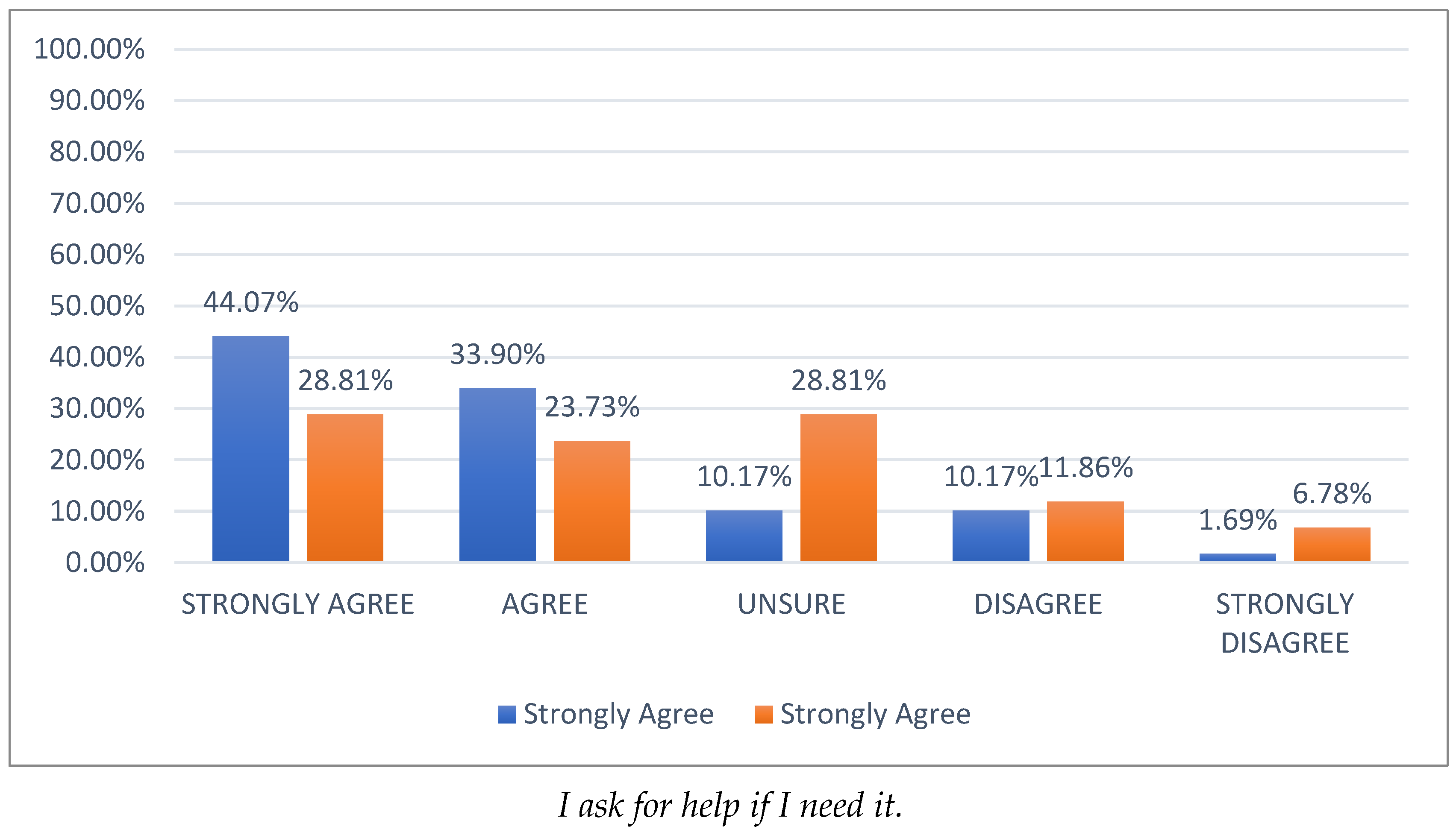
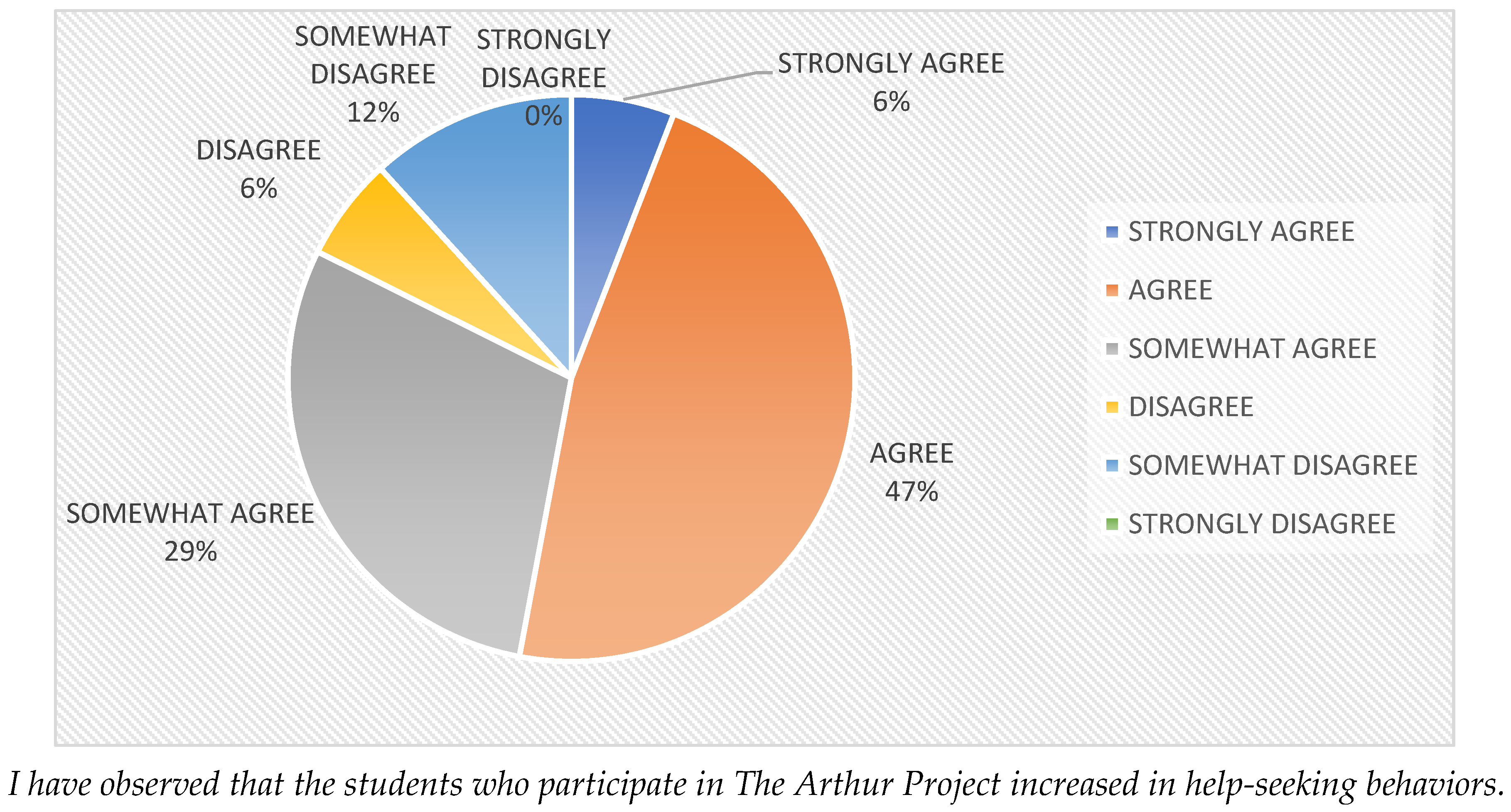
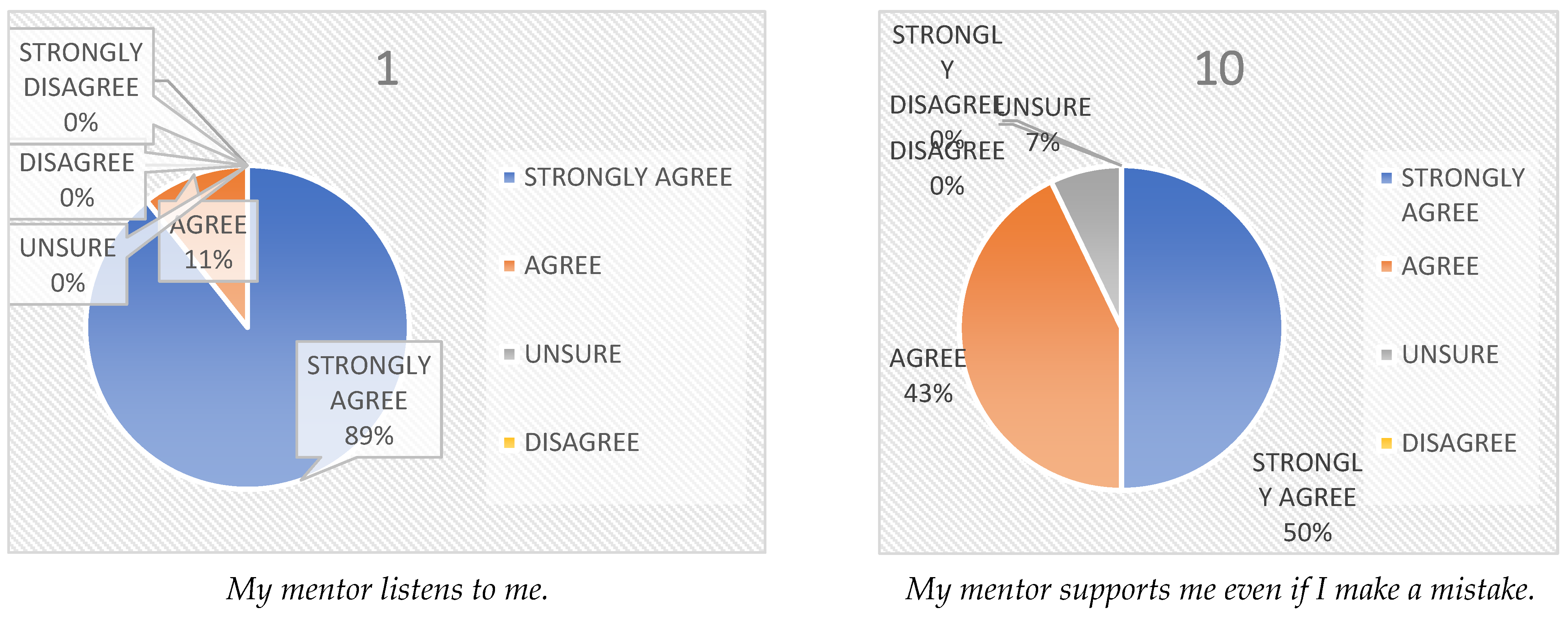
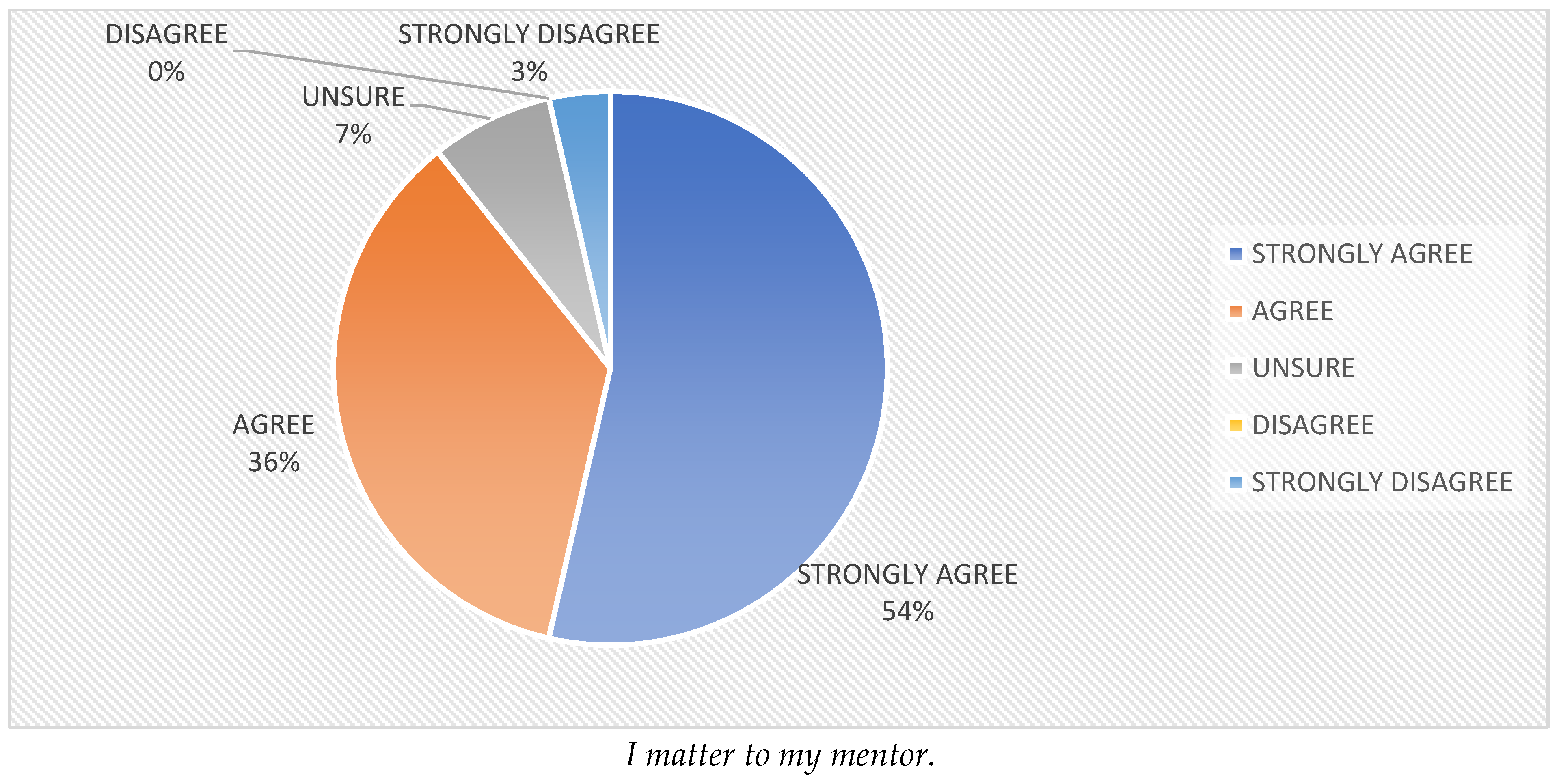
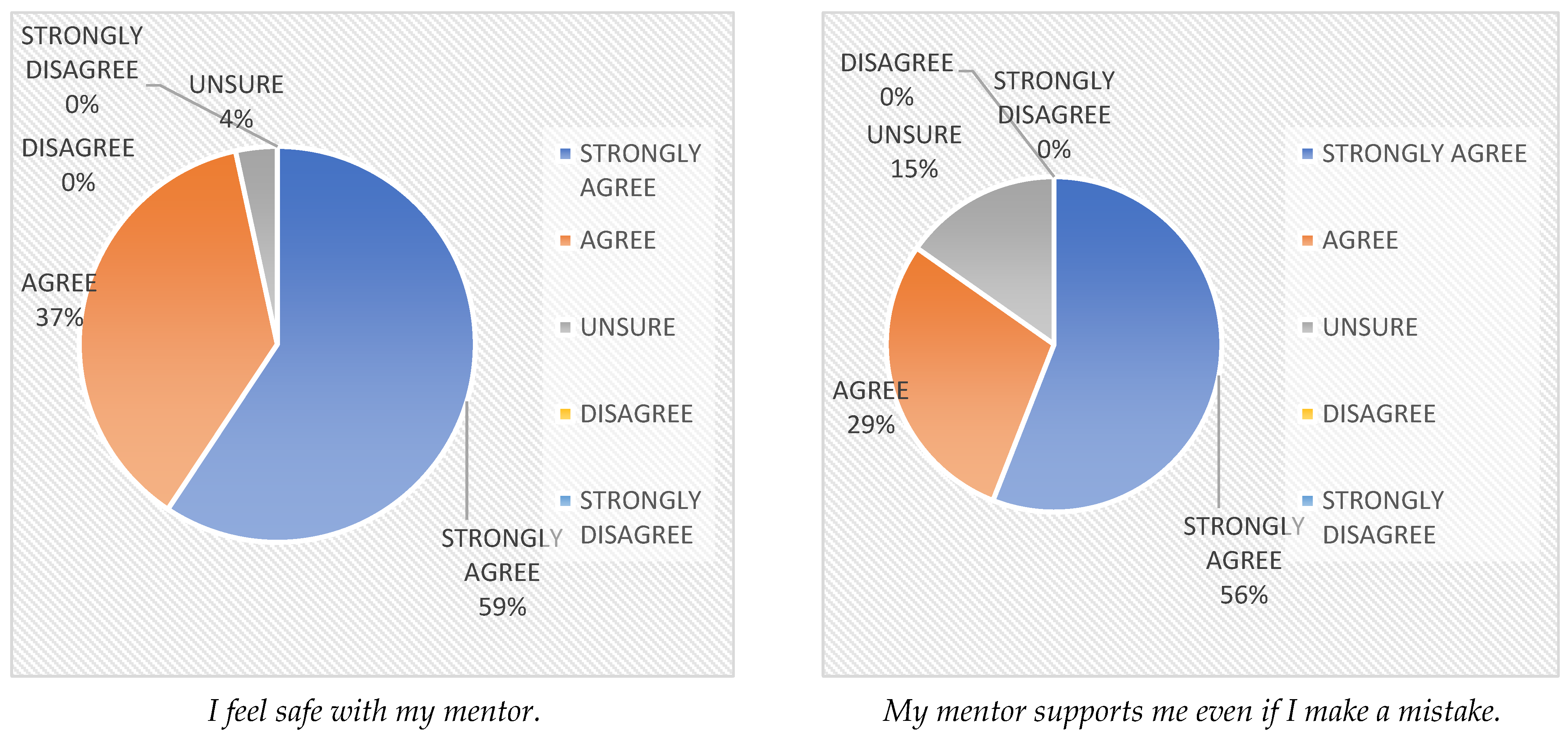
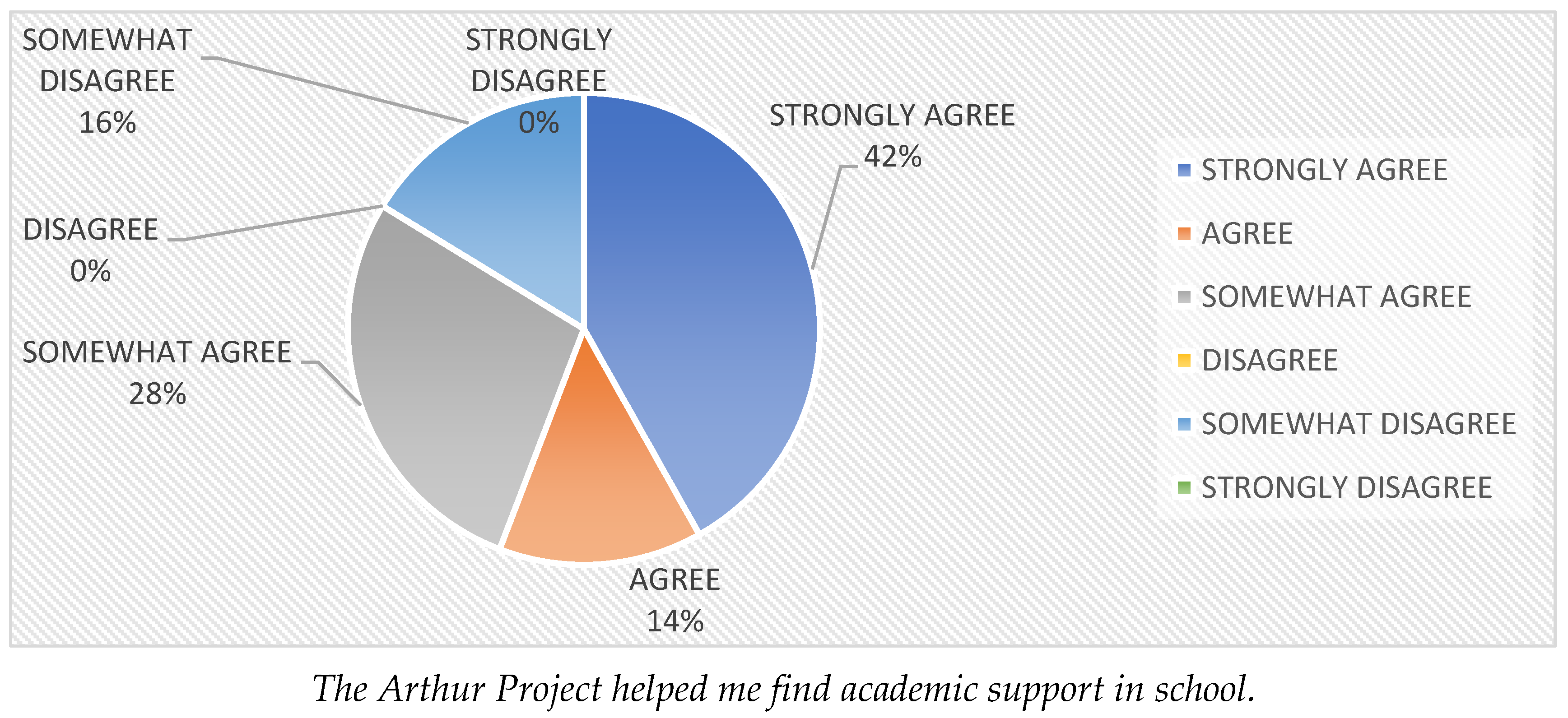
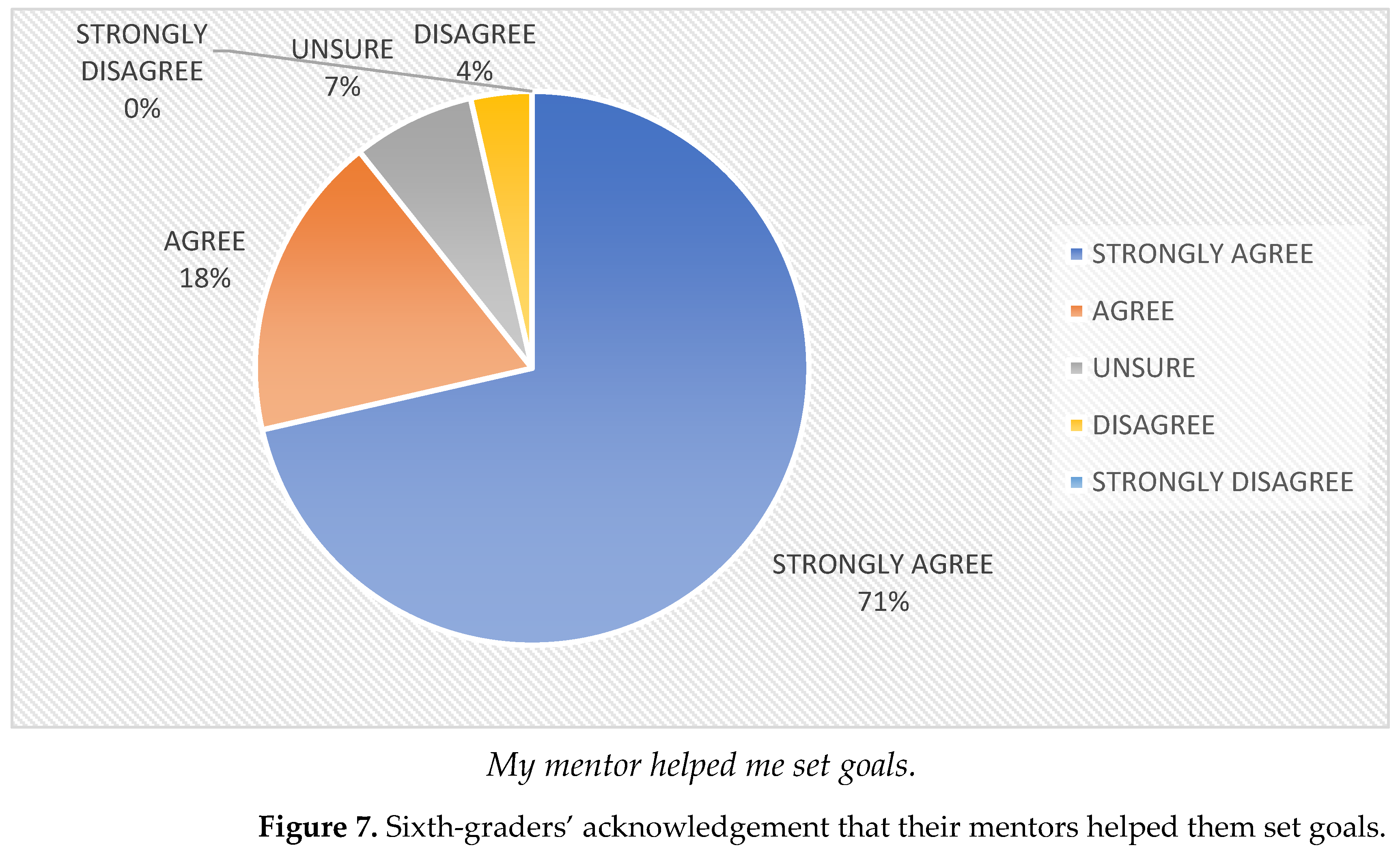
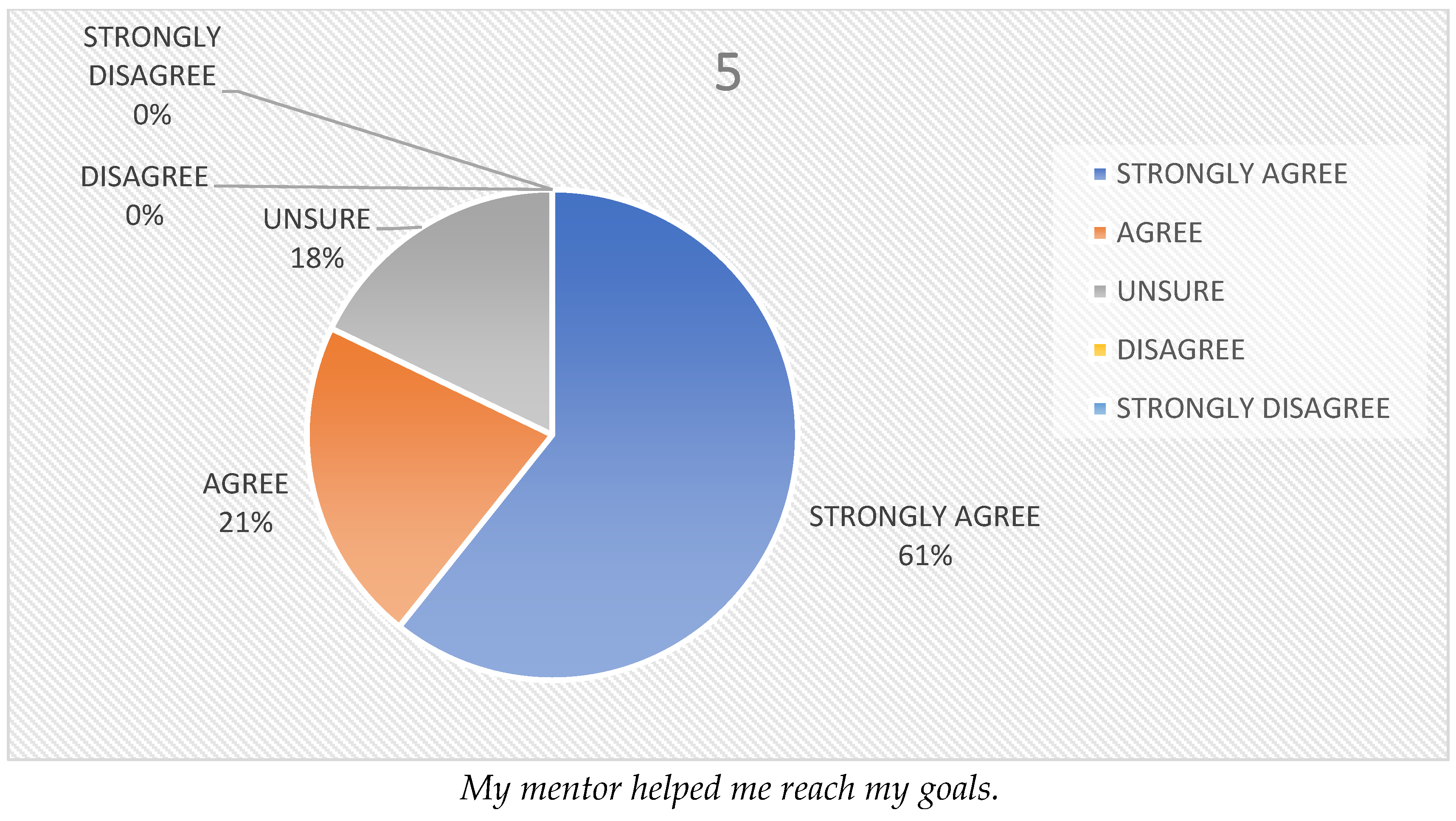

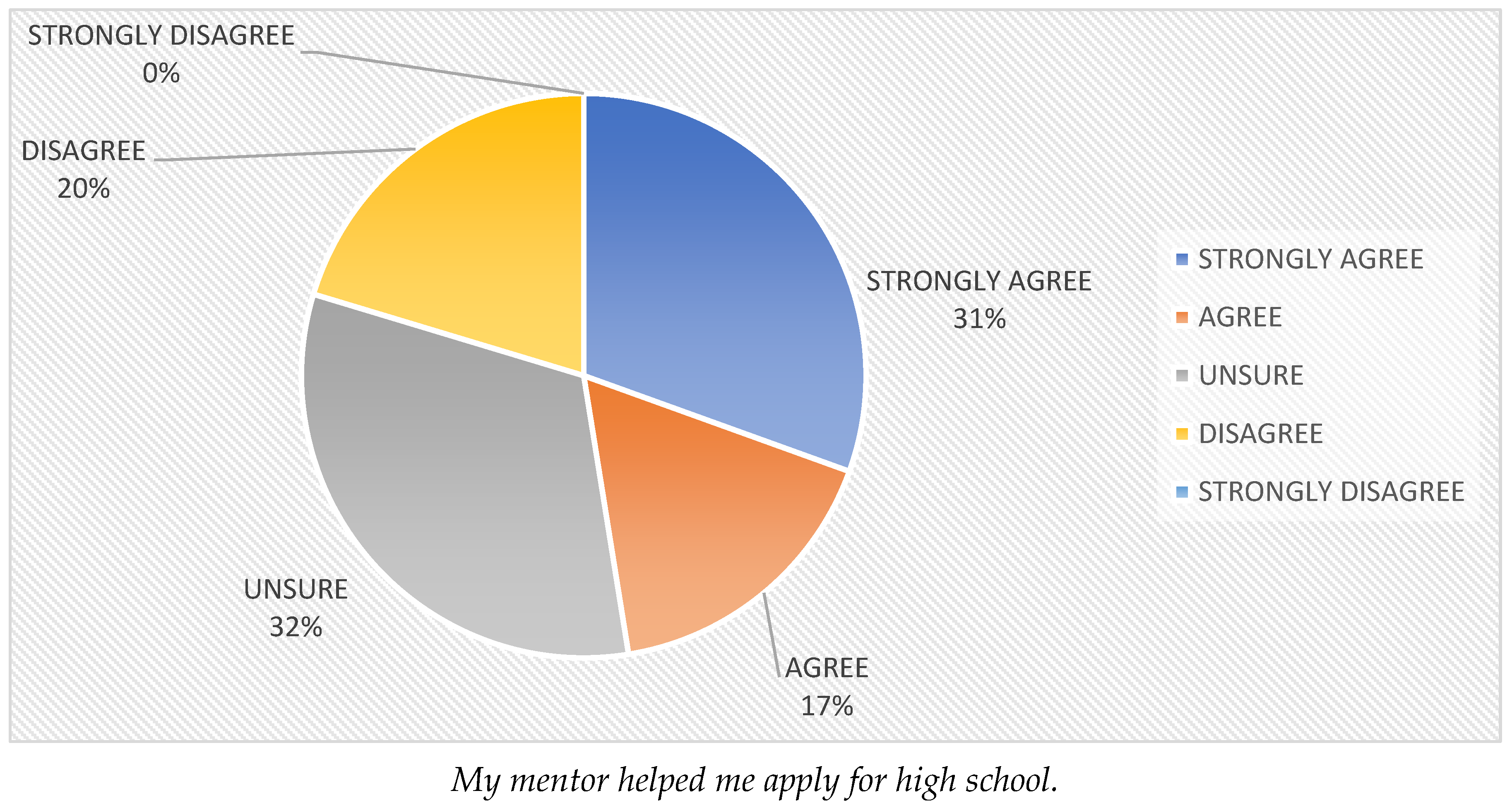
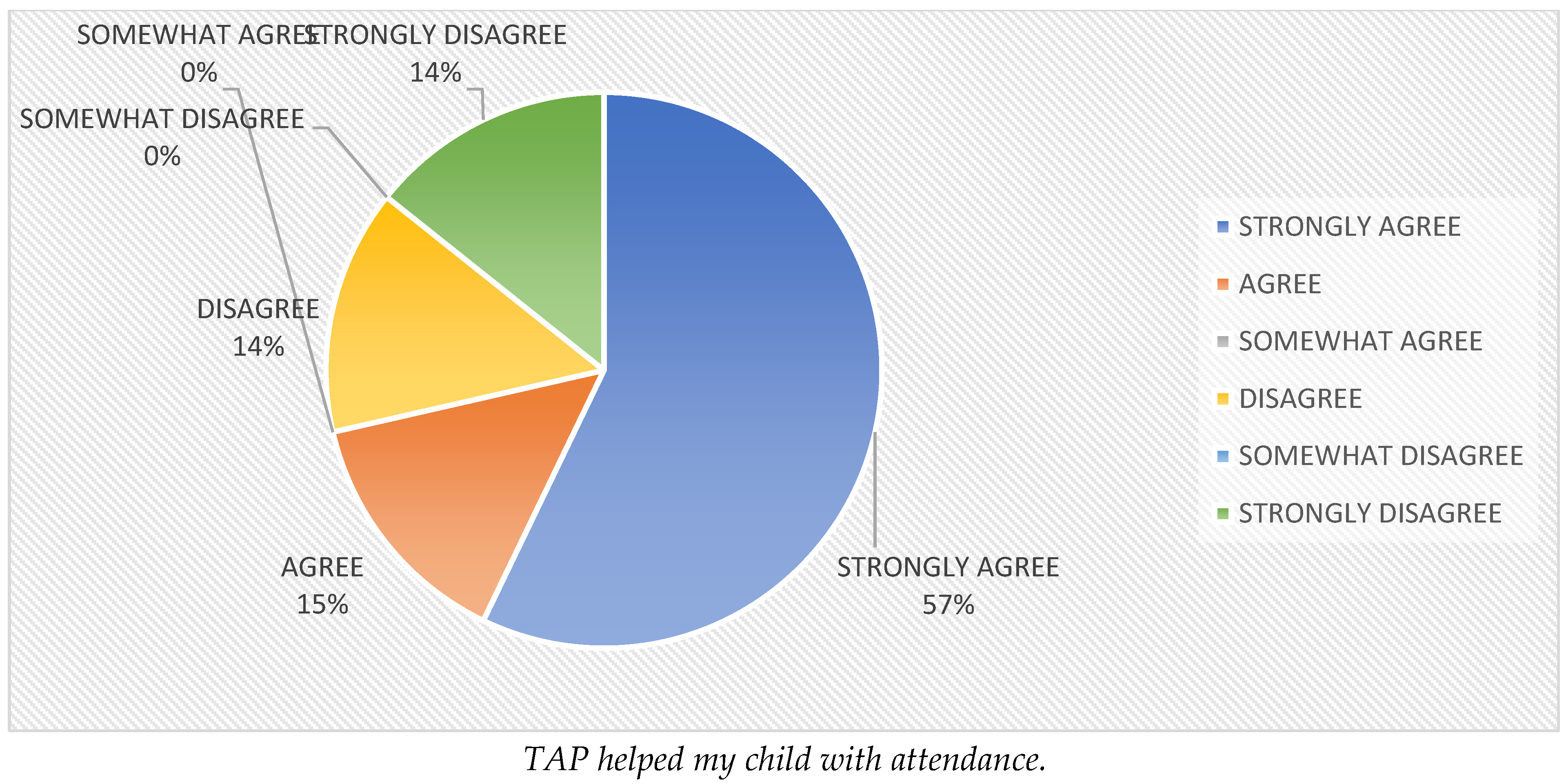

| The Author Project Goals | Measurements |
|---|---|
| 1. Cultivate youth’s sense of mattering (social-emotional wellness and mental health) through therapeutic mentoring. |
|
| 2. Increase academic engagement. |
|
| 3. Provide youth with leadership, goal achievement, problem-solving, knowledge, self-advocacy, and communication skills to reach their full potential. |
|
| 4. Provide the skills to successfully transition to high school and beyond. |
|
| 5. Foster family engagement through the Education and Family Advocacy Programs. |
|
| 6. Encourage culturally responsive community and civic engagement. |
|
| 7. Apply an antiracist, social justice lens to mentoring in furtherance of awareness and attunement to wider social impacts and social change. |
|
| Statement | before TAP | after TAP |
|---|---|---|
| I finish what I begin. | ||
| 6th Graders | 24% | 29% |
| 7th and 8th Graders | 34% | 49% |
| When I have a goal I stick with it. | ||
| 6th Graders | 25% | 36% |
| 7th and 8th Graders | 55% | 78% |
| I am more likely to stick with my homework. 6th Graders 7th and 8th Graders | 57% 59% | 75% 83% |
Disclaimer/Publisher’s Note: The statements, opinions and data contained in all publications are solely those of the individual author(s) and contributor(s) and not of MDPI and/or the editor(s). MDPI and/or the editor(s) disclaim responsibility for any injury to people or property resulting from any ideas, methods, instructions or products referred to in the content. |
© 2024 by the authors. Licensee MDPI, Basel, Switzerland. This article is an open access article distributed under the terms and conditions of the Creative Commons Attribution (CC BY) license (https://creativecommons.org/licenses/by/4.0/).
Share and Cite
Miner-Romanoff, K.; Greenawalt, J. Evaluation of the Arthur Project: Evidence-Based Mentoring in a Social Work Framework with a Social Justice Approach. Societies 2024, 14, 123. https://doi.org/10.3390/soc14070123
Miner-Romanoff K, Greenawalt J. Evaluation of the Arthur Project: Evidence-Based Mentoring in a Social Work Framework with a Social Justice Approach. Societies. 2024; 14(7):123. https://doi.org/10.3390/soc14070123
Chicago/Turabian StyleMiner-Romanoff, Karen, and Jessica Greenawalt. 2024. "Evaluation of the Arthur Project: Evidence-Based Mentoring in a Social Work Framework with a Social Justice Approach" Societies 14, no. 7: 123. https://doi.org/10.3390/soc14070123
APA StyleMiner-Romanoff, K., & Greenawalt, J. (2024). Evaluation of the Arthur Project: Evidence-Based Mentoring in a Social Work Framework with a Social Justice Approach. Societies, 14(7), 123. https://doi.org/10.3390/soc14070123







